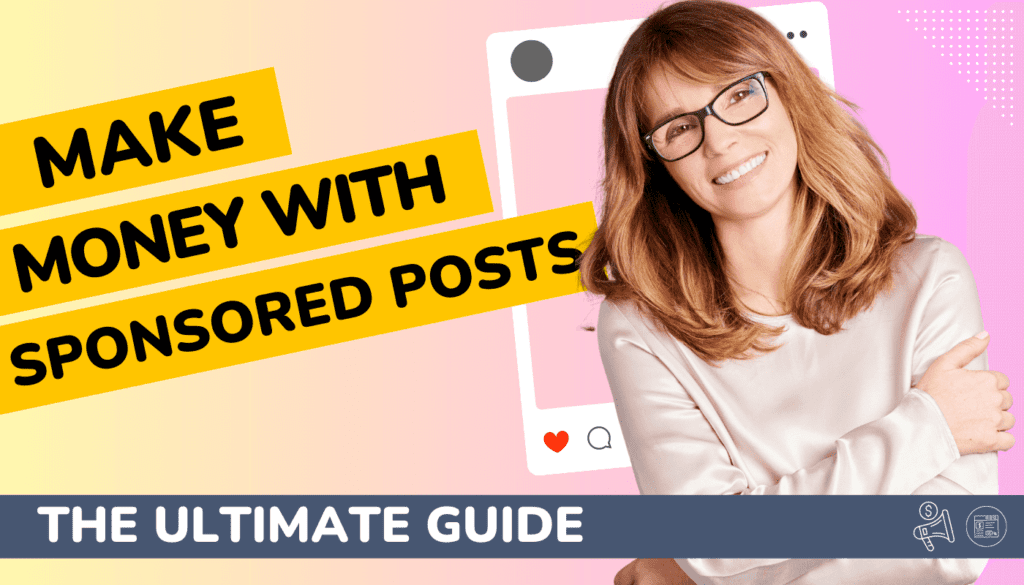Sponsored posts have become an increasingly popular and it is one of the most effective monetization strategies for bloggers, influencers, and content creators. By working with brands, you can earn money while also providing your audience with valuable content that is relevant to their interests.
In this guide, we will go over all the ins and outs of sponsored content, including how to find opportunities, how to pitch yourself to brands, and how to create high-quality content that aligns with both the brand’s messaging and your own values as a content creator.
We will also review everything you need to know to start making money with sponsored posts, from the basics of sponsored content to advanced strategies and tactics for maximizing your earnings and building long-term relationships with brands.
Creating successful sponsored posts requires more than just writing a blog post or posting on social media and to be successful in this competitive space, we consolidated everything you need to know to monetized posts and build relationship the smart way. So let’s get started!
What are Sponsored Posts?
Sponsored posts, also known as promoted posts are usually defined by being paid partnerships between brands and influencers, where the content creators creates content promoting the brand’s products or services to their audience. For example, content creators can be socila media influencers with a high follower count and engagement rates or content bloggers with large monthly pageviews and email subscribers.
Did you know? You can start promoting posts and work with brands on sponsored post deals if you own 1,000 + followers. Brands will value building relationships with creators who have a highly-engaged following base and who target a specific audience.
Benefits of sponsored posts
There are many mutual benefits between the influencers and the brands when doing sponsored posts. This is a win-win scenario providing value to both -creators and brands- and help drive meaningful engagement and results.
For creators, sponsored posts can be a lucrative way to monetize their content and earn income from their blogging or content creation efforts. By working with brands, creators can also expand their reach and gain exposure to new audiences, which can help them grow their following and increase their influence.
Sponsored posts can also provide creators with access to new products and services to review, giving them the opportunity to create fresh and engaging content for their audience.
On the other side, for brands, sponsored posts offer a powerful way to connect with consumers in an authentic and engaging way; by partnering with creators who have established audiences and credibility in a particular niche or industry, brands can reach their target audience more effectively and create content that is more likely to be shared and engaged with.
Did you know Nano influencers — those with less than 10K followers — have the highest average engagement rates?
Different types of sponsored posts
Here are some of the most common types of sponsored posts:
- Social media posts such as Facebook and Instagram sponsored posts, are sponsored posts created for social media platforms where the blogger or influencer promotes a product or service to their followers.
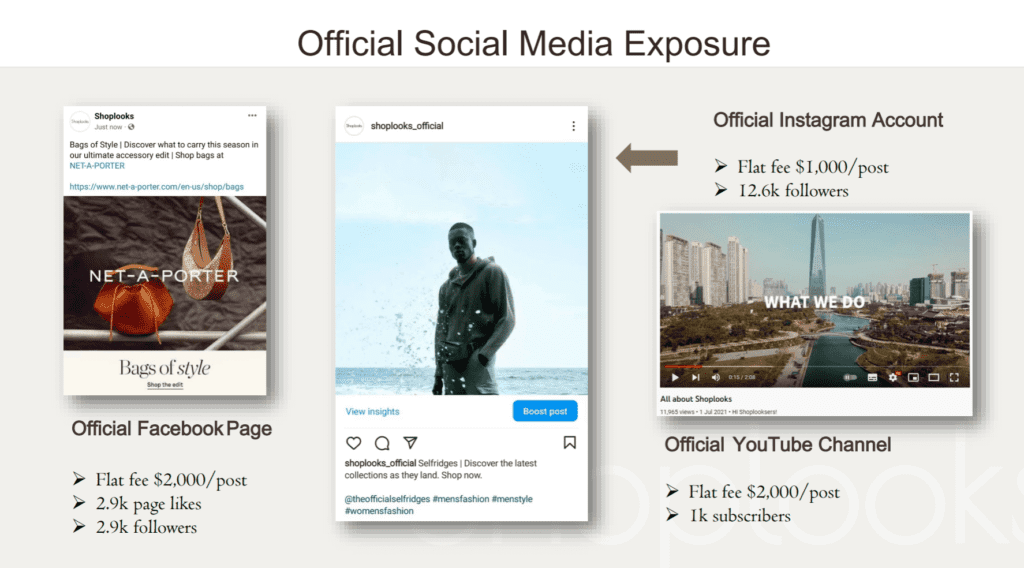
- Sponsored videos: These are videos created by bloggers or influencers to promote a product or service on platforms like YouTube or Vimeo.
- Sponsored events: These are events that are sponsored by a brand or company where content creators and influencers are invited to attend and promote the brand or product.
- Review posts: These are posts where content bloggers or influencers review a product or service and share their honest opinion about it.
- How-to posts: These are posts where bloggers provides a tutorial or step-by-step guide on how to use a particular product or service.
- List posts: These are posts where the blogger or influencer creates a list of products or services that they recommend and provide a brief description of each one. These list posts can also be monetized using affiliate links and where placement in the list can be negotiated via a direct partnership with the brand in exchange of a flat fee.
The type of sponsored post that bloggers or influencers create will largely depend on the type of product or service being promoted and the partnership and payout model the brand will be willing to work with.
Finding Sponsored Post Opportunities
Now that we understand what are sponsored posts and their benefits, let’s take a closer look at how to find sponsored posts opportunities. The best ways to source great opportunities include:
Using social media
Many companies and brands use social media platforms to promote their products or services. By searching for keywords and hashtags related to your niche, you may come across companies that are looking for influencers or bloggers to collaborate with. You can also follow brands in your niche to keep track of their promotions and campaigns.
Start by searching for hashtag search in your industry and niche. For example, if you are looking to work with pet brands, search for relevant hashtags such as #pets #petlovers #petproducts #animalovers. Then, narrow down results by searching for hashtags such as #sponsored #ad #paidpartnership #collaboration #productreview #sponsoredpost to find sponsorship.
Joining influencer networks
Influencer networks are platforms that connect influencers with brands. By signing up for these networks, you can browse and apply for sponsored post opportunities with brands that match your niche and audience. Below is a list of popular influencer networks and discovery tools you can use to find opportunities to connect with brands in your space and promote your content:
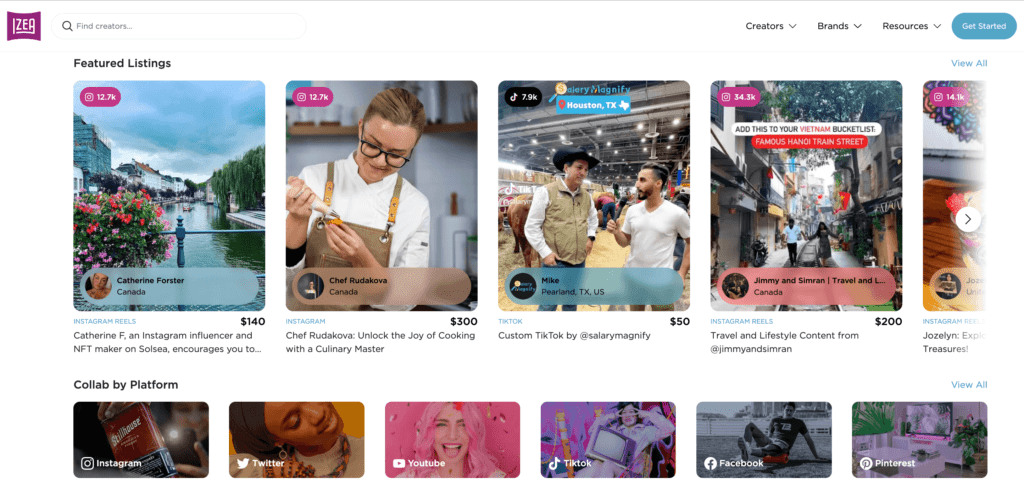
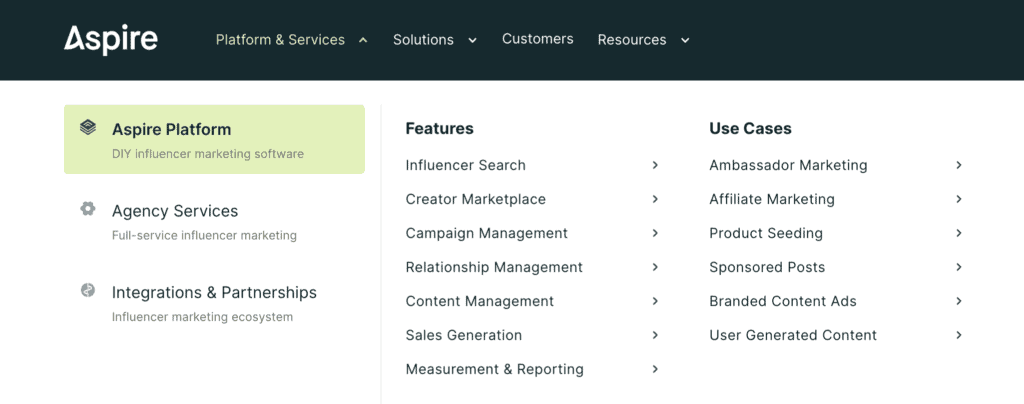
Tip: Use the categories and filters of these influencer networks to find partnerships that align with your values and brand image and best fit with your content and audiences’ interests. The more organic these partnerships feel, the better the trust and following you will get from your audience.
Pitching to brands directly
If there is a brand that you love and believe would be a good fit for your audience, you can reach out to them directly and pitch a sponsored post idea. Make sure to highlight the benefits of working with you, such as insights on your audience and engagement rates and demographics.
Attend industry events
Attending conferences, meetups, and other industry events can be a great way to network and connect with brands in your niche. Be sure to bring your business cards and have a clear elevator pitch ready to introduce yourself and your blog.
Working with ad agencies
If you have a budget, working with agencies can also be a great way to secure sponsored post opportunities for your blog. Digital marketing and talent agencies have a network of brand partners in verticals or markets you target and can be a very effective way to leverage to connect with potential brands.
How to Pitch Yourself to Brands and Win Sponsored Post Deals?
Pitching yourself is an essential part of the process of working with brands and sponsored post deals for your online business.
To win any sponsored deals with brands, start by researching the right partners and brands in your niche.
Craft a compelling pitch: The pitching phase is essential in setting up the right relationship with your partner and your pitch should be clear, concise, and compelling.
Introduce yourself and your blog, and explain why you are interested in working with the brand. Be sure to highlight the benefits of working with you, such as your engagement rates and demographics.
Offer unique and creative ideas for sponsored posts; Brands are always looking for fresh, unique ideas to promote their products or services. Make sure that your ideas are original and demonstrate how they will add value to the brand.
Provide a media kit: Your media kit is an important tool for showcasing your blog’s statistics, demographics, and services to potential sponsors or advertisers. Here are some steps to create a media kit for sponsored posts
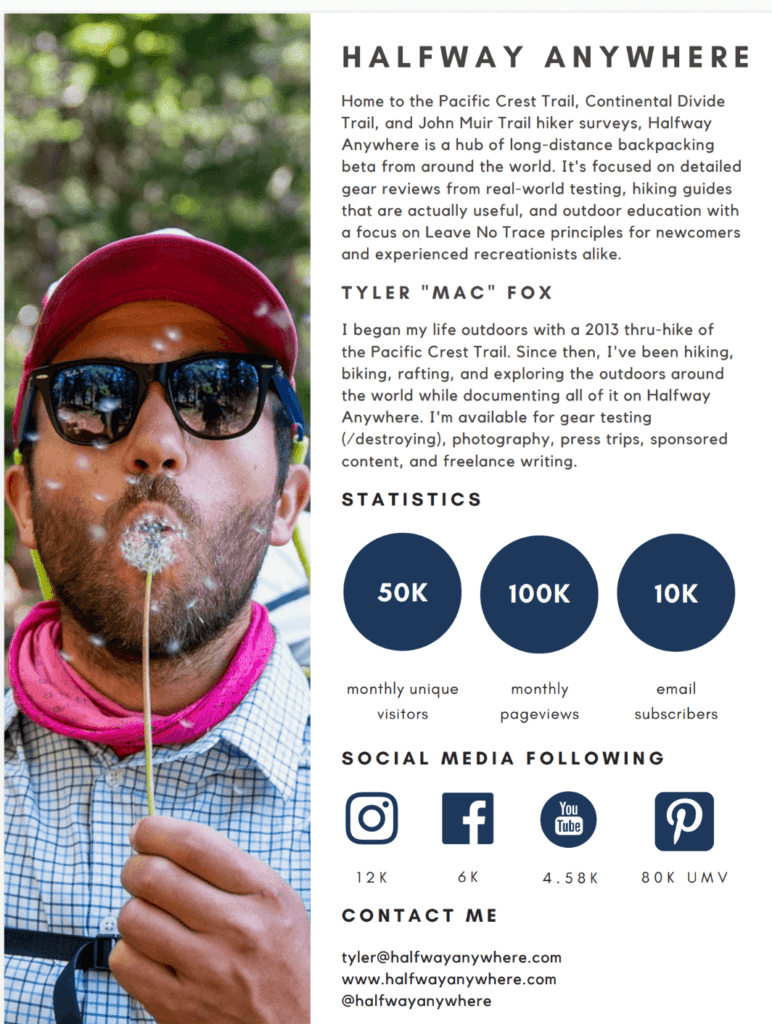

- Define your brand: Start by defining your brand and what makes your blog unique. Include a brief description of your blog’s mission, values, and the audience you serve.
- Include your statistics: List your blog’s key statistics, such as monthly pageviews, unique visitors, social media followers, and email subscribers. You can also include data on your audience demographics, such as age, gender, location, and interests.
- Highlight your services: Outline the services you offer for sponsored posts, such as sponsored blog posts, social media campaigns, and product reviews. Provide examples of past sponsored posts and case studies to showcase your skills and experience.
- Showcase and negotiate your rates: Include your rates for sponsored posts and any other services you offer. Be sure to explain what is included in each package and provide a breakdown of the costs.
- Design your media kit: Use a professional design tool or template to create a visually appealing media kit. Include high-quality images and graphics to showcase your brand and make it stand out.

- Add contact information: Include your contact information, such as email, phone number, and social media handles, so potential sponsors can easily get in touch with you.
- Review and update regularly: Review your media kit regularly and update it with new statistics, case studies, and rates as needed. This will ensure that you are always presenting the most current and relevant information to potential sponsors.
- Communication and Follow-up: If you don’t hear back from the brand, follow up with a polite email or message. This shows that you are still interested in working with them and helps to keep the conversation going.
- Deliver on time and with quality: Ad agencies and their clients expect sponsored posts to be delivered on time and with high-quality content that aligns with their brand messaging. Make sure to deliver on your promises and exceed their expectations to build long-term relationships with ad agencies.
Best Practices for Creating High-Quality Sponsored Content
Authenticity and Transparency are essential in crafting engaging sponsored content that will stick with your audience and keep long relationships with your brand partners. Here are a few best practices to keep conveying your messaging in a meaningful way while boosting your engagement with your audience.
Crafting Sponsored Post Headlines
It all starts with crafting compelling sponsored post headlines:
- Use numbers: Headlines with numbers tend to perform well because they promise a specific amount of information or insights. For example, “5 Tips for Better Sleep” or “10 Ways to Save Money on Your Next Vacation.”
- Be clear and specific: Use a headline that clearly communicates the topic and purpose of the post. Avoid using vague or clickbait-style headlines that may mislead or confuse readers.
- Highlight the benefit: Focus on the benefit or value that the post provides to the reader. This could be in the form of actionable tips, insights, or new information.
- Use strong adjectives: Use descriptive adjectives to make your headline stand out and grab the reader’s attention. For example, “Incredible”, “Powerful”, “Mind-blowing”, “Insane”, etc.
- Use emotional triggers: Try to appeal to readers’ emotions by using words or phrases that evoke curiosity, excitement, or urgency. For example, “Don’t Miss Out”, “Limited Time Offer”, “Exclusive”, etc.
- Keep it short and sweet: Try to keep your headline under 10 words, as shorter headlines tend to be more memorable and attention-grabbing.
Remember, the headline is the first thing readers will see, so make sure it accurately represents the content of the post and encourages readers to click through to read more.
Incorporating brand messaging
To effectively incorporate brand messaging in sponsored posts, it’s important to have a clear understanding of the brand’s mission, values, and tone of voice.
Using the brand’s language and tone of voice in the post helps to reinforce its brand identity and maintain consistency in messaging. Including the brand’s products or services and highlighting its unique selling proposition (USP) further promotes the brand and helps to differentiate it from competitors.
Additionally, incorporating visual branding elements such as logos, colors, and fonts in the post helps to increase brand recognition and reinforce the brand’s visual identity.
Ultimately, a well-crafted sponsored post should enhance the brand’s reputation and increase brand awareness among its target audience.
Designing visual content for sponsored posts
When designing visual content for sponsored posts, it’s important to keep in mind the brand’s guidelines for logos, colors, and fonts.
Incorporating these elements into the visual content helps to reinforce the brand’s visual identity and increase brand recognition.
High-quality images that are relevant to the content can also make the content look professional and engaging. Using original images, rather than stock images, can create a more unique and personalized feel.
When creating visual content, simplicity is key. Avoid cluttered images or graphics that may confuse or overwhelm the audience. Instead, use clean and simple designs that are easy to read and understand. If using text, keep it short and simple with attention-grabbing headlines or captions that are relevant to the content and promote the brand’s messaging.

Lastly, it’s important to ensure that the visual content is optimized for mobile devices as more people access content on their smartphones. By following these tips, the visual content will effectively promote the brand’s messaging, engage the audience, and maintain brand consistency across all marketing materials.
Disclosure Rules and Guidelines: What You Need to Know
When working on sponsorship deals with brands and when promoting content against financial compensation, there are disclosure rules and guidelines for sponsored posts in place to ensure that the audience is aware of the sponsored nature of the content and that it complies with advertising regulations. Here are some important things to keep in mind when creating sponsored posts:
- Disclosure statement: The most important rule is to disclose that the post is sponsored. This can be done by including a disclosure statement such as “This is a sponsored post” or “Sponsored by [Brand Name]” at the beginning or end of the post.
- Use of hashtags: Another way to disclose the sponsorship is to use #sponsored or #ad hashtags in the post. This helps to ensure that the audience is aware of the sponsored nature of the content and complies with regulations.
- Be transparent: Again, It’s important to be transparent with the audience about the nature of the relationship between the brand and the creator. Avoid misleading the audience by creating posts that appear to be organic when they are sponsored.
- Follow advertising regulations: Advertisers and creators must adhere to advertising regulations such as those set by the Federal Trade Commission (FTC) in the United States or the Advertising Standards Authority (ASA) in the United Kingdom.
- Stay within brand guidelines: Even when creating sponsored posts, it’s important to maintain brand consistency and follow the brand’s guidelines for logos, colors, and fonts.
By following these guidelines, sponsored posts can maintain transparency, comply with regulations, and ensure that the audience is aware of the sponsored nature of the content. Ultimately, this will help to maintain trust with the audience and promote the brand’s reputation.
Avoiding conflicts of interest by always maintaining editorial control over the content you create, even in a sponsored deal. This means that the brand should not have the final say over the content or messaging in the sponsored post.
How to Maximize Your Earnings with Sponsored Posts?
In this section, we will review how to best price your sponsored posts, what types of payout models you should consider, and review what are the best ways to increase your revenue from these deals.
Pricing Strategy for your Sponsored Posts – How Much Should You Charge?
Determining how much to charge for sponsored posts can depend on a variety of factors, such as:
- Audience size
- Engagement rates
- Niches and verticals
- Scope of the project
You may charge a flat fee for a single sponsored post or charge based on the number of social media platforms or posts included in the deal.
Rates can vary anywhere from $10 to $50 per 1,000 followers for a sponsored post on Instagram. Some influencers with a particularly engaged and loyal following may charge more.
To find out how much your competitors charge for sponsored posts, you can check their Media kits – if they have one – or research in influencer discovery tools and networks what public rate they display to start getting a benchmark and build up your rates.
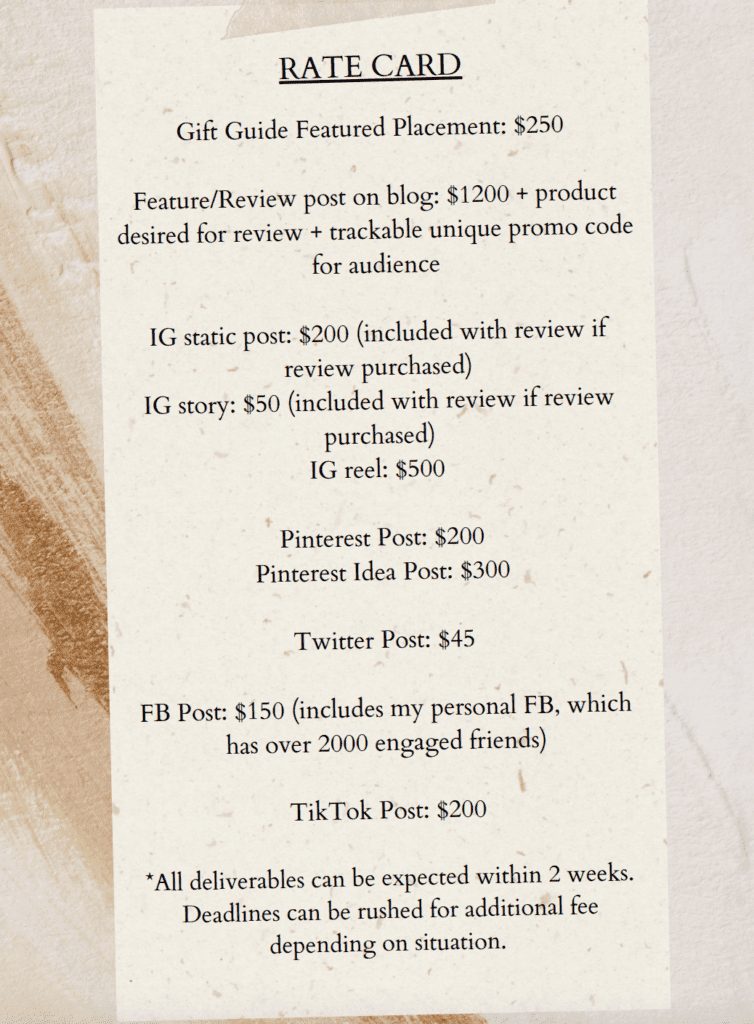
Ultimately, it’s important to consider the value that you bring to the table as an influencer, as well as the needs and budget of the brand you’re working with. Be transparent about your rates and negotiate in good faith to reach a mutually beneficial agreement.
Promotion Strategies to Increase Your Sponsored Post Income
Increasing your sponsored post revenue requires a focus on audience engagement, diversifying revenue streams, building long-term partnerships, using data to demonstrate value, and continuously improving skills and expertise. There are a few tactics to use to scale your revenue:
Promoting your sponsored posts on social media
Promoting sponsored posts on social media is an important part of any successful sponsored content strategy. It requires tagging the brand, using relevant hashtags, boosting the post, sharing on multiple platforms, creating engaging captions, and utilizing stories and live videos. By following these tips, creators, and influencers can effectively promote their sponsored content and increase visibility, reach, and engagement.
Consider boosting the post with paid advertising to increase reach and engagement. Social media platforms like Facebook and Instagram offer advertising options that allow creators to target specific audiences and increase the visibility of their sponsored content.
Using email marketing to promote your sponsored posts
Email marketing is a powerful tool for promoting sponsored posts to a targeted audience. To effectively use email marketing for this purpose, you need to first build an email list and segment it based on interests, behaviors, and demographics. Then, you should create engaging subject lines, personalize the email, provide value, and include a clear call to action that encourages recipients to engage with the sponsored content.
The key to successful email marketing for promoting sponsored content is to provide value to the recipient and make the content relevant to their interests and preferences. By following these tips and creating targeted and personalized emails, creators and influencers can effectively promote their sponsored content and increase engagement and conversions.
Incorporating your sponsored posts into content marketing strategies
Incorporating sponsored posts into a content marketing strategy can be a great way to generate revenue while still providing value to your audience. To do so effectively, it is important to define your target audience and carefully select sponsors that align with your values and are relevant to your audience. Your sponsored content should be of high quality and provide value to your audience, while also including clear disclosure language that meets FTC guidelines.
Monitoring the performance of your sponsored posts is also important for optimizing your content and sponsorships for better results. By following these tips, you can successfully integrate sponsored posts into your content marketing strategy and provide a valuable source of revenue without sacrificing the quality of your content or the trust of your audience.
Wrapping Up
Making money with sponsored posts involves several key strategies, including selecting the right brands, defining your target audience, creating high-quality content, and promoting the content effectively.
To succeed in this space, it is essential to understand the importance of disclosure guidelines, pricing models, and leveraging influencer marketing campaigns to increase revenue.
By following the tips outlined in a comprehensive guide, individuals and businesses can monetize their online presence through sponsored posts and generate a steady source of income while maintaining the trust of their audience.
With the growing popularity of influencer marketing and the increasing demand for authentic content, sponsored posts can be a lucrative opportunity for those who are willing to invest time and effort into building a strong brand and creating valuable content.
Interested in other ways to make money online with your content? Checkout our best monetization strategies for content creators


